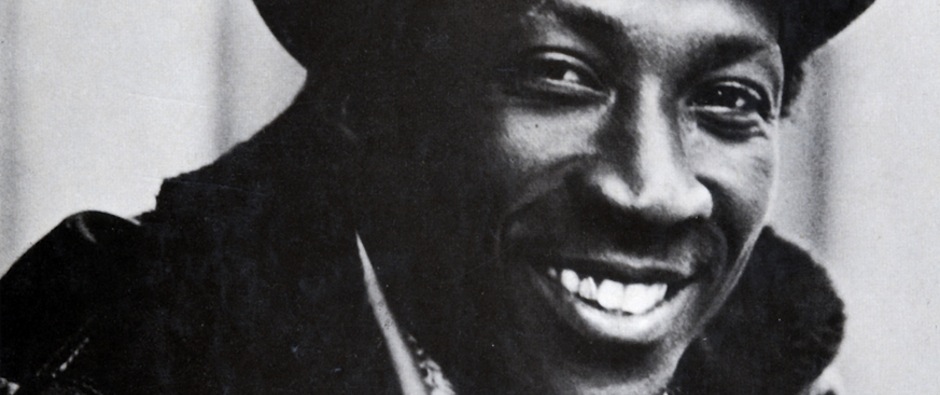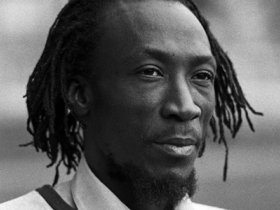
Ellis' pioneering role, which stretches way back into the late 1950s pre-ska era, extended into the Reggae era of the late 1960s, prompting musicologists to justifiably dub him 'the Godfather of Rocksteady and Reggae'.
Ironically though, Ellis came on to the entertainment scene, not as a singer, but as a dancer on the popular Vere Johns Opportunity Hour talent shows during the late 1950s. In an interview done by Roy Black with Ellis for radio in 2006, he explained his genesis.
Dancer to singer
"I started at Vere Johns, dancing, and won a couple of prizes. About two years after, I switched to singing alone as Alton Ellis. I was doing not so bad and not so good. Then a friend of mine named Eddie Parkins suggested we start a group. We started practising every evening, and took it from there. When another friend wrote some words and gave me, I put melody to it and went to Coxson [Clement Dodd] in 1957, and gave him his first hit for marketing purposes. All previous recordings were done for his sound system," said Ellis.
According to Ellis, Muriel was a big hit in England upon its release there in the late 1950s. The song also climbed to No. 1 on the Jamaican charts.
Ellis had high praises for the recording, which he described as the "the biggest R&B song to come out of Jamaica".
"It was on the back of songs like this, that Coxson got his act together and came with Studio One," Ellis explained.
In duet with Parkins, Ellis followed up with You're My Heaven and Yours in the same R&B mould for Coxson, before parting company with him in unceremonious fashion.
"We couldn't agree because it's one game he play - all is mine."
After opting out of the music business for a while, Ellis put a group together shortly after Jamaica's Independence in 1962.
New producer
Calling the group Alton and the Flames, the entity went to producer Duke Reid at 33 Bond Street in West Kingston.
It was a period in which Ellis described himself as "anti-bad boy,
never like the bad boy business that begin to creep up in the country". Prime
example of this came in the form of the single Dance Crasher.
He reinforced his message with four others for Reid, titled, Don't Trouble People, Blessing Of Love, Cry Tough, and The Preacher.
Born in 1938 into a musical family in Trench Town, West Kingston - the Mecca of music that produced Bob Marley, Peter Tosh, Bunny Wailer, Delroy Wilson and others - Ellis was first attracted to what he called 'moody sentimental R&B songs', which perhaps explains the sentimental overtones of Muriel.
Dance Crasher became his second No. 1 hit. But Ellis' leanings towards anti-rude boy songs, created some anxious moments for him, when some producers, who were doing quite the opposite with recordings like The Wailers' Let Him Go and Jailhouse and Derrick Morgan's Tougher than Tough and Judge Dread in Court, became angered by his recordings, which were curtailing their sales.
Ellis duly reverted to what was his greatest love, the writing and singing of love songs like Breaking Up in 1968.
:
Earlier on, between 1966 and 1967, Ellis recorded his biggest hit, Girl I've Got A Date.
Ska to Rocksteady
The song was another of his love songs and a landmark recording as well. It not only signalled a shift in the musical beat from ska to Rocksteady, but became the inspiration for two other big hits.
The Harry J All Stars drew heavily from Girl I've Got A Date to create the 1969 instrumental, Liquidator, which made it on to the top 10 of the United Kingdom's charts.
Top American singing group, The Staple Singers, copied the opening stanzas of Liquidator, to create the American billboard No. 1 hit I'll Take You There in 1971.
The rise of the Rocksteady beat, with its accompanying dances in late 1966, provided the ideal vehicle for Ellis to express his innermost feelings, many of which came from real-life situations.
Ellis came to undisputed prominence in 1967 and early 1968, the period of Rocksteady's dominance, recording highly memorable cuts with top producers Dodd and Reid. Doing so made Ellis one of few singers to simultaneously establish successful relationships with the two archrivals.
Ellis did recordings on other topics for other producers during this period, but his tearjerkers in the Rocksteady mould for Dodd and Reid, remain his most enduring pieces.
How could we forget, I'm Just A Guy and I'm Still In Love With You Girl, for Dodd, and Ain't that Loving You for Reid or the romantically charged, I'll Never Love Again in which man's infirmity was exposed.
His wife, his inspiration
Ellis declared that many of these songs were about his estranged wife, Pearl.
"She was so much in control of my emotions, that whenever she hurt me, Coxson was happy, in the sense that he knew that I have some hits coming out of the situation. But he is the same one trying to keep us together all the time," Alton was quoted as saying, in the book Reggae Routes, by Kevin O'Brien Chang and Wayne Chen.
*********************************
Original article from the Gleaner: http://jamaica-gleaner.com/gleaner/20130908/ent/ent7.html













 less
less
 more
more